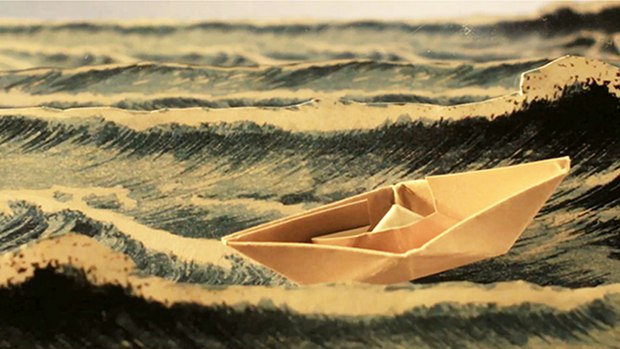Stop-motion short film using 3,000 still images is inspired by a chapter from the book of medical case studies, “The Man Who Mistook His Wife for a Hat,” by Dr. Oliver Sacks.
Tess Martin’s latest animated short film, The Lost Mariner, is now online. At just under six minutes, The Lost Mariner is inspired by a chapter from the book of medical case studies, “The Man Who Mistook His Wife for a Hat,” by Dr. Oliver Sacks.
The Lost Mariner has been shown at over 30 festivals worldwide including CutOut Fest, Animateka and the Holland Animation Film Festival. It won Best Animated Film at the American Documentary Film Festival in Palm Springs, and Best Student Film at the Snake Alley Film Festival in Burlington, IA.
“The patient described suffered from a severe memory condition, and when I read it I immediately started thinking about how one would animate it,” Martin says. “I decided to use the theme of photographs to tell the story, as photographs are usually our most direct link with our past. This is taken to the extreme, so that in fact everything in the film is a photograph.”
To create the short, Martin first filmed actors in a white room, and then converted the footage into image sequences. “I printed these images out small, and cut out all the actors. In this way I would have a stack of paper cut outs for one actor's scene,” Martin recounts. “I then created the environment of the scene also out of paper cut outs -- the wallpaper, the bed, the table, the props, etc. These were all set up on what's called a multi-plane animation stand, which is a structure with glass layers with the camera pointing down. I then animated all the cut-outs, including the cut-outs of the actors, on the multi-plane stand. I also shot a few scenes using stacks of replaceable photos in real environments, like the bathroom sink and hallway.”
Watch the making-of video in the player below:
The entire five-minute and 45-second film was animated at either six or 12 frames per second. “Normally I work at 12 frames per second, but because of all the cutting involved in this film I halved the frame rate of many scenes so I my hand wouldn't fall off,” Martin relates. “I would say the final film is made up of roughly 3,000 still images.”










